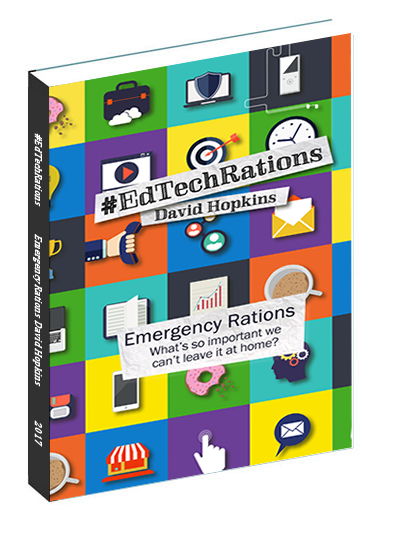Bring Your Own Device For Learning (pt.2) #BYOD4L
Seven years ago (!) I was invited to join the founding team of the #BYOD4L team – ‘Bring Your Own Device for Learning’. An experiment in social learning, something to engage the mind after the Christmas closedown, and a way to further our understadning of how we can use our personal computers (desktop, laptop, phone, or tablet) for our own learning.
A reminder for you if, like me, this had slipped to the archive – the 5 C’s of learning:
“Devised by Sue Beckingham and Chrissi Nerantzi, the course will bring like-minded teachers and learners together in an environment where connection, collaboration, curation, creation, and communication in and around mobile/smart devices are used (or could/should be used) from those with experience and those looking to gain experience and insight into this field of ‘technology-enhanced learning’.”
BYOD4L
Sheila MacNeill, one of the large group of participants in that first iteration (and who went on to facilitate and run the course in subsequent years) has asked a really relevant question in this time of social and workplace upheaval –
“Students and staff were accessing their “stuff” on the bus/train/car/tube where ever, as well as on-campus/in class/in the library/in the refectory etc. But now, we’re all at home (or maybe in halls of residence, or maybe with very limited time on campus), so it’s not so much a case of bringing your own device for learning, rather bringing learning to your own device (BYOD2L instead of BYOD4L). That’s a subtle but important change of emphasis. And of course, access to “your own” device isn’t a given. The last year has certainly highlighted the digital divide around access to devices. Not all students (or teachers) have a laptop/computer/device that they can use or afford the data allowance to engage with online learning. Having a mobile phone is one thing, but their limitations for learning have been well and truly exposed. We still can’t assume that everyone has unlimited online access.”
Sheila MacNeill
The question Sheila poses is whether the orientation of the title and therefore the focus of the course needs to be altered, in line with recent experiences due to lockdown. So … Bring your own device for learning or bringing learning to your device?
For me, and after watching my kids try their hardest in completely different experiences of accessing wildly different approaches to online classes, the device is still at the fore of the question. I can’t imagine trying to access resources and actually ‘learn’ (in a formal capacity) on a phone-sized screen. Yes, I read books and articles and blog posts on my phone, so I am learning from those sources. At least once a day I have to put my phone down as my eyes are aching from the small (but much bigger than the early smartphones) screen size, and wish I had a tablet to use instead.
My youngest is using an iPad for his school work, often needing to print his maths worksheets off as they are non-editable PDFs. My eldest is sat at the table on the laptop in live lessons and between 6-8hrs of classwork per day. If we think we have Zoom/teams fatigue, and we’ve had some experience of this before lockdown before, then think of the kids who have no experience and have been dropped in the deep-end suddenly.
Is a refocus of #BYOD4L to Bring Your Own Device 2 Learning – #BYOD2L – needed? For me what’s important is that the student, the academic, the friend, the colleague, etc. understands the power in their hand or pocket, that there is something they have an interest or passion in, and that they can learn something new. Learning never stops, nor should it, but perhaps we need reminding of this every once in a while?
Photo by Kyle Glenn on Unsplash


















